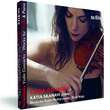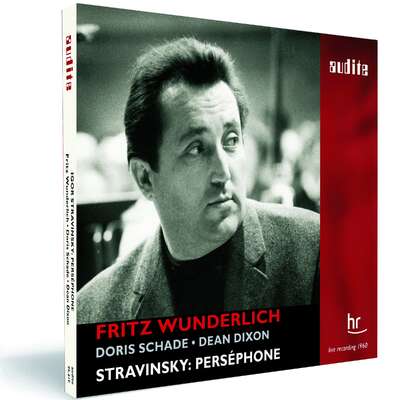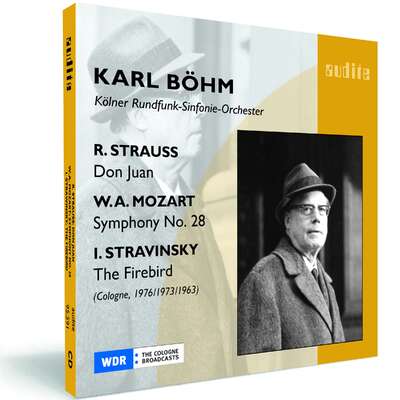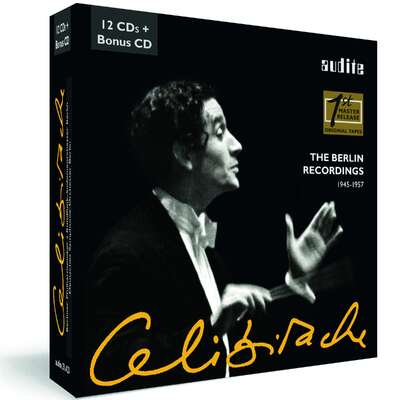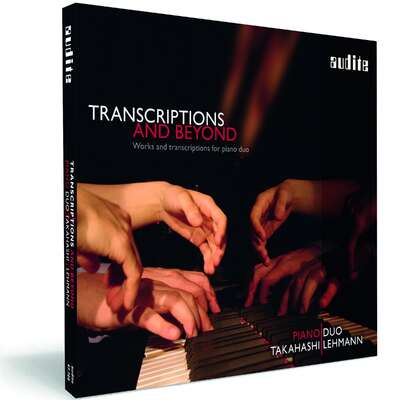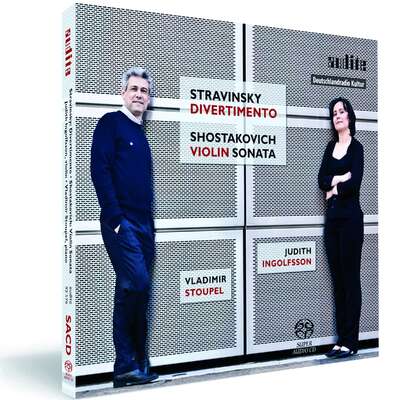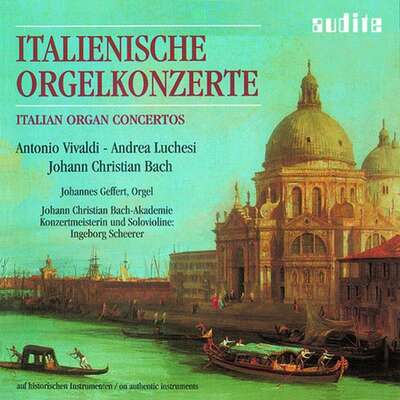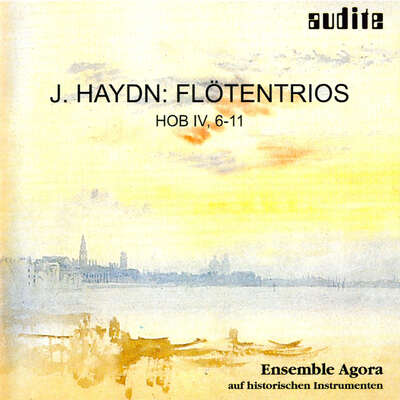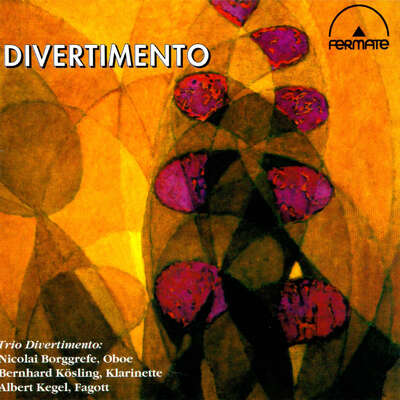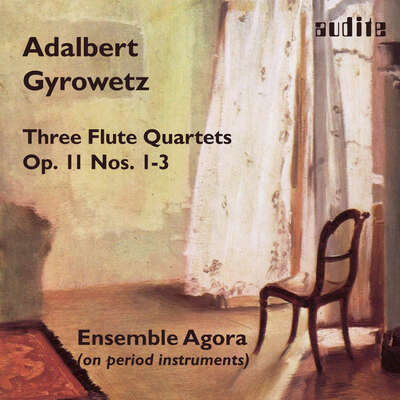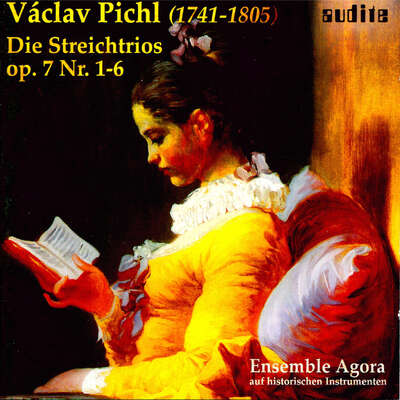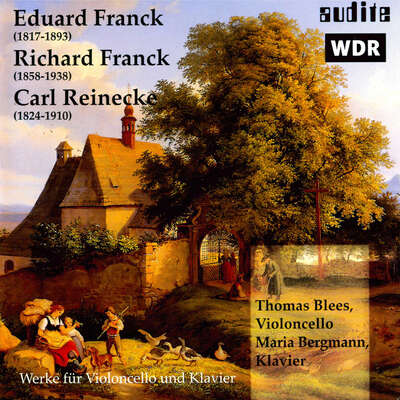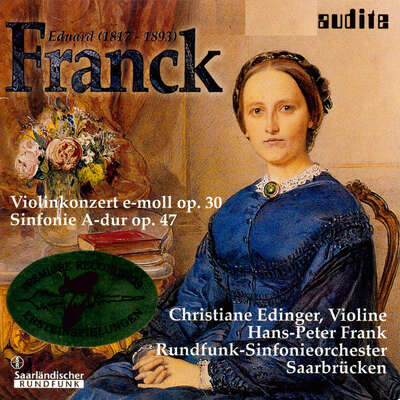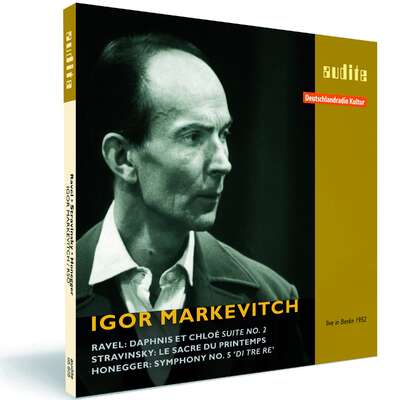
Stravinsky’s rarely-performed Violin Concerto, coupled with the main works of his repertoire for violin and piano. The composer first hesitated to write a violin concerto, but he went on to compose a masterwork in “Neoclassical” style in close collaboration with violinist Samuel Dushkin. He also made numerous arrangements for violin and piano, joining again with Dushkin to enrich the violin repertoire with his imaginative genius.more
"This is gutsy playing, full of power and poetry, with crisp orchestral support." (The Guardian)
Track List
This bonus track is only available as a download!
Details
|
Igor Stravinsky: Works for Violin
Liana Gourdjia plays Violin Concerto and chamber music by Igor Stravinsky |
|
| article number: | 97.697 |
|---|---|
| EAN barcode: | 4022143976970 |
| price group: | BCA |
| release date: | 6. January 2017 |
| total time: | 87 min. |
Bonus Material
Informationen
Stravinsky's rarely-performed Violin Concerto, coupled with the main works of his repertoire for violin and piano. The composer was initially convinced that he lacked the experience necessary for writing a violin concerto and taking full advantage of the instrument's possibilities in concertante style. But in 1931 he went on to compose a Neoclassical masterwork in close collaboration with violinist Samuel Dushkin, a work that bears his unmistakable fingerprint. It is considered one of the 20th century's greatest violin concertos. He also made numerous arrangements for violin and piano, joining again with Dushkin to enrich the violin repertoire with his imaginative genius. Along with the multi-movement works, the Suite italienne and Divertimento, Liana Gordjia and Katia Skanavi present a selection of miniatures: the "Berceuse" from The Firebird, the "Danse russe" from Petrushka, the "Chanson russe" from the opera Mavra, and Tango, a piano piece arranged by Dushkin for violin and piano.
Liana Gourdjia gave her solo debut with orchestra at the age of nine. Her talent was then actively supported, and she performed numerous concerts in Russia's great concert halls as well as on radio and television. She studied at the Moscow Central School of Music and the Cleveland Institute of Music in the U.S. She is the winner of the Sion-Valais International Competition and a prizewinner at the Michael Hill, Corpus Christi, Hudson Valley, and Kingsville International competitions. She has been awarded a residency with the Montgomery Symphony in the U.S., where she appeared as an orchestral soloist and concertmaster and performed solo recitals.
Katia Skanavi performed her first concert at the age of 12 at the Great Hall of Moscow's Tchaikovsky Conservatory, where she interpreted Kabelevsky's Third Piano Concerto under the baton of the composer himself. By her eighteenth birthday she had won several prizes at the Marguerite Long-Jacques Thibaud Competition in Paris, followed by debuts at the great international concert halls. She then continued her studies at the Conservatoire National in Paris and Moscow's Tchaikovsky Conservatory, and later at the Cleveland Institute of Music in the U.S. In 1994 she won the Maria Callas Competition in Greece and was a finalist at the Van Cliburn Competition in 1997.
Zsolt Nagy studied conducting with István Párkai at the Ferenc Liszt Academy in Budapest. Further studies with Péter Eötvös led him to become Eötvös' assistant at the Institute for New Music of the Staatliche Hochschule für Musik in Karlsruhe and for numerous other projects including Guest Professor at the International Eötvös Institute. In 1999 he was appointed Chief Conductor and Musical Advisor of the Israel Contemporary Players. From 2002 to 2014 he was Professor of Conducting at the Conservatoire National Supérieur de Musique et de Dance in Paris (CNSMDP). Zsolt Nagy appears regularly on stages of four continents, working with outstanding soloists, leading orchestras, ensembles and choirs.
The Deutsche Radio Philharmonie Saarbrücken Kaiserslautern presents concert series in the cities of Saarbrücken and Kaiserslautern. It makes regular appearances across the border in France and Luxemburg, as well as in Brussels, Mainz, Karlsruhe, and Mannheim. Tours in recent years have taken the orchestra to Switzerland, China, and Japan, and in 2016 it will be visiting South Korea for the third time, followed by an appearance at the Warsaw Beethoven Festival in 2017. The Deutsche Radio Philharmonie was created in 2007 out of the fusion of the Rundfunk-Sinfonieorchester Saarbrücken (SR) and Rundfunkorchester Kaiserslautern (SWR).
Reviews
www.artalinna.com | 26 October 2017 | Jean-Charles Hoffelé | October 26, 2017 | source: http://www.artal... Acéré
Je crois bien ne plus l’avoir entendu aussi vert depuis la gravure indémodable de Wolfgang Schneiderhan et de Karel Ančerl. Grand disque, qui me révèle une violoniste absolument à suivre.Mehr lesen
Klassiek Centraal | 16/10/2017 | Veerle Deknopper | October 16, 2017 | source: https://klassiek... Igor Stravinsky, de evolutie
Igor Stravinsky (1882-1971) was een veelzijdig componist; een term waarmee maar al te vaak terecht of onterecht wordt gegooid wanneer het eenMehr lesen
En hier ligt ook de nadruk bij deze cd, de evolutie van Stavinsky als componist. Een hoogst interessant en trouwens geslaagd opzet. Niemand minder dan de Hongaarse dirigent Zsolt Nagy dirigeert de Russische violiste Liana Gourdija begeleid door de eveneens Russische pianiste Katia Skanavi. Beide jonge vrouwen behoorden ooit tot de fameuze Russische school van wonderkinderen. Ze bouwden achteraf een internationale carrière uit en evolueerden richting kamermuziek. Dit kan men trouwens goed horen aan de beheersing op dit album. Alle emoties worden bijzonder fijnzinnig neergezet met veel oog voor detail. Toch worden de meer hevige passages ook goed geaccentueerd, dit dankzij de ondersteuning van het orkest van de Deutsche Radio Philharmonie.
De bindende kracht is zonder twijfel Nagy, een bruggenbouwer tussen traditioneel en hedendaags klassiek. De evolutie die Stravinsky als componist doormaakte was niet klein. Hij overbrugde daarbij een tijd die enerzijds behoorde tot het traditionele en evolueerde naar het hedendaagse. De man is tenslotte nog geen 50 jaar overleden. Zo vangt het album aan met de Russische dans en lied, een Divertimento – kamermuziekgewijs gespeeld, gevolgd door de Suite Italienne – melancholisch uitgevoerd. Na een wiegelied volgt tijdens het laatste deel van het album een evolutie naar de typische klanken van de latere Stravinsky. Na de Tango, wordt de cd afgesloten met het Vioolkoncerto in D in vier bewegingen dat hij voor zijn vriend, de Amerikaanse violist Samuel Dushkin (1891-1976) schreef.
Wilt u kennismaken met Stravinsky, of hem gewoon zonder teveel geweld ineens ervaren? Dan hoort deze schijf zeker en vast in uw kast.
Fanfare | October 2017 | Michael De Sapio | October 1, 2017 | source: http://www.fanfa...
Rachel Barton Pine’s superbly played—with imaginative ornamentation—and glowingly recorded solo Bach goes to the head of the class and shouldMehr lesen
Don’t think you’ll ever like Bach in English? You might change your mind after hearing Chandos’s new recording of Neil Jenkins’s brilliant English translation of the St John Passion. It’s a revelation, with committed performances all around.
The splendid debut disc of the ensemble The Vivaldi Project highlights lesser known string trios from the galant and Classical eras, played in vibrant style.
Naxos’s recording of a pastiche Mass assembled by conductor Franz Hauk from movements by Donizetti and his teacher Johann Simon Mayr suggests that the liturgical output of the bel canto composers is due for a reappraisal. Religious music that is engagingly human and colorful, it deserves to be taken seriously.
It’s rare to find so much of Stravinsky’s violin music under one roof, and Russian violinist Liliana Gourdjia’s thoughtful performances offer a perfect combination of Russian fire classical poise.
www.utmisol.fr | 24.07.2017 | Jean Jordy | July 24, 2017 | source: http://www.utmis...
Ce disque entièrement consacré au génial compositeur du Sacre duMehr lesen
Fanfare | June 2017 | Michael De Sapio | June 1, 2017 | source: http://www.fanfa...
I happen to be one of those (probably rare) listeners for whom Stravinskian Neoclassicism constitutes daily bread. I could listen to this kind ofMehr lesen
These performances by the Russian violinist Liana Gourdjia are thoughtful, measured, and alive to the quiet moments of reflective beauty in Stravinsky’s music. Many a violinist has tried to play Stravinsky as if he were Borodin or Glazunov, and so Gourdjia’s restrained, sensitively varied tone is most welcome. The partnership of Gourdjia and Katia Skanavi is defined by filigree counterpoint, careful articulation, and wit. Listen, for instance, to the delightful rubato they apply to the Pas de deux of the Divertimento. The last movement of the Divertimento is a delightful romp, the two musicians enjoying its quirky eccentricity.
My test for a Stravinsky violinist is how he or she handles something as simple as the Serenata or Gavotta of the Suite italienne. Pieces like these (one might also mention Ravel’s Tombeau de Couperin) reflect a distinctive post-World War I mood, a nostalgic backward glance backward to a gentler epoch. It was from such works that the Neoclassical movement grew. When done just right, the haunting quality of these pieces can make your throat ache; Gourdjia and Skanavi achieve this.
In the concerto, Gourdjia reveals the Russian hearth that lies behind the work’s Neoclasssical facade, as shown in the many passages of joyous “fiddler on the roof” scratching and scraping. In these passages Gourdjia flashes and slashes, not attempting to make the rough places plain. (Compare her tensile declamation of the Aria I with Hilary Hahn’s smooth cantilena on her Sony recording.) On the debit side, the more deliberate tempos often result in a loss of energy and drive. This is particularly true of the Capriccio, which lacks the brio and sense of catharsis it has in some performances; one has the impression that Gourdjia wants this movement to go faster. There are, moreover, a couple of crucial moments—such as the opening of Aria II—where Gourdjia and the orchestra are not glued together as closely as they might be.
For listeners who are primarily interested in the concerto (which is not “rarely performed,” as the blurb on the back of the disc has it) there are many other versions to choose from; my favorites are those by Hahn and Anne-Sophie Mutter, both of which outshine this one. But what sets this disc apart is the unique combination of pieces. Where else can you find this assortment of miniatures—transcriptions of movements from earlier works including Mavra, Petrushka and The Firebird? Stravinsky’s reinvention of a Tango (transcribed from the original for piano) has playful mischief, and the Chanson Russe (transcribed from Mavra) a songful pathos in these accounts.
So, a few reservations about the concerto but none whatsoever about the other works, especially the Divertimento which sounds most satisfying. Gourdjia’s playing combines Classical restraint and Russian fervor. It’s unfortunate she avoided the Duo concertant, and I hope she records it in future. With excellent recorded sound, this disc is recommended to Stravinskians as well as violin lovers who are normally resistant to Stravinsky.
Fono Forum | April 2017 | Giselher Schubert | April 1, 2017
Strawinsky notiert in seinem bestechend originellen Violinkonzert die Ausdrucksanweisung "brillante" nicht etwa zur Solovioline, wie es zu erwartenMehr lesen
Das führt natürlich zu heiklen interpretatorischen Fragen, die gänzlich unterschiedlich gelöst wurden. Robert Craft etwa, der enge Vertraute des späten Strawinsky, lässt in seiner Einspielung den Solisten zurücktreten, der so gewissermaßen das orchestrale Musizieren kommentierend begleitet, während in einer Einspielung mit David Oistrach der Solist unangefochten dominiert und das Orchester als Klangkulisse die Musik reich bewegt grundiert.
Liana Gourdjia stellt sich auf dieses ungewöhnliche konzertante Musizieren mit stupender Musikalität sehr überzeugend ein. Sie dominiert nicht nur, wo es die Musik erfordert, sondern nimmt sich auch zurück – nicht nur durch dynamische Differenzierungen, sondern mehr noch durch die Intensität der Tonartikulation; sie gestaltet mit makellos-blendender Technik eben ganz aus der Musik heraus. Die Deutsche Radio Philharmonie unter Zsolt Nagy greift den lebhaften, eher schwingenden als stampfenden konzertanten Impetus, der Strawinskys Partitur durchzieht, niveauvoll auf. Und auch Katia Skanavi, die als Pianistin bei den Solostücken mehr als bloß assistiert, erweist sich als eine kongeniale Partnerin.
Diapason | Mars 2017 | Jean-Michel Molkhou | March 1, 2017 | source: https://issuu.co...
Rezension siehe PDF!Mehr lesen
Audio | 3/2017 | Andreas Fritz | March 1, 2017 KLANG TIPP
Dieses Violinkonzert hätte es beinahe nie gegeben: Nur weil sich Strawinsky dazu überreden ließ, entstand das neoklassizistische Meisterwerk. DieMehr lesen
Bayern 4 Klassik - CD-Tipp | 01.03.2017 | March 1, 2017 | source: http://podtail.c...
BROADCAST CD-Tipp
Liana Gourdjia spielt Strawinsky
Sendebeleg siehe PDF!Mehr lesen
The Guardian | Sunday 12 February 2017 | Fiona Maddocks | February 12, 2017 | source: https://www.theg... Power and Poetry
This is gutsy playing, full of power and poetry, with crisp orchestral support.Mehr lesen
www.classictoulouse.com | 4 février 2017 | Serge Chauzy | February 4, 2017 | source: http://www.class... Stravinsky et le violon
La violoniste sait allier la beauté intrinsèque de sa sonorité à l’écriture acérée de Stravinsky. Elle forme avec Katia Skanavi un duo parfaitement affuté. [...] Avec le soutien du bel orchestre de la Deutsche Radio Philharmonie, dirigé par le chef hongrois Zsolt Nagy, Liana Gourdjia s’empare de cette partition avec une évidente autorité. Elle en assume vaillamment le caractère virtuose souhaité par le compositeur, ainsi que le style néoclassique, tout en soulignant l’invention de l’écriture. Sans froideur aucune, son interprétation charme l’oreille autant que l’esprit.Mehr lesen
Pizzicato | 13/01/2017 | Remy Franck | January 13, 2017 | source: http://www.pizzi... Stravinsky mit viel Sensualität
Auf dieser ganzen und vom Programm her originellen Stravinsky-CD besorgt die russische Geigerin Liana Gourdjia zunächst knackig frischeMehr lesen
Hier haben wir es offensichtlich mit einer Geigerin zu tun, deren Musiksprache durch die sinnlichen Komponenten geprägt wird, und vom Bedürfnis, den Tonraum mit Musik so zu füllen, dass diese vom erlebenden Ich zu erlebenden Du strömt. Und in diesem Musizieren wird sie von Katia Skanavi bestens und mitgestaltend unterstützt.
Im Violinkonzert gibt es eine angenehme Klarheit des musikalischen Diskurses auch im Orchesterpart. Solistin und Dirigent bemühen sich, die reizvollen melodischen Strukturen optimal herauszuarbeiten und die Musik so stimmungsvoll und lebendig wie nur möglich zu gestalten. Sie konzentrieren sich dementsprechend auf die Rhythmik, den federnden Schwung und die Farben der Musik. Extreme werden dabei tunlichst vermieden, sodass die Musik in ihrer ganzen Vitalität auch elegant bleibt und letztlich doch nie technisch-kühl wirkt, weil auch hier Sensualität eine große Rolle spielt.
Here we have very sensual Stravinsky performances. In the concerto, Liana Gourdjia and Darrell Ang care for melodies as well as for colours, rhythm and flexibility.
https://vimeo.com | 01.01.2017 | Die Bildmischer | January 1, 2017 | source: https://vimeo.co...
VÖ-Ankündigung inkl. Video-Trailer siehe PDF!Mehr lesen
L'éducation musicale | no 110 janvier 2017 | Jean-Pierre Robert | January 1, 2017 | source: http://www.leduc...
L'exécution qu'en donne Liana Gourdjia, formée entre autres à l'école russe de violon et professeure à l'École Normale de Musique de Paris, est exemplaire de maîtrise et de finesse, et l'accompagnement du Deutsche Radio Philharmonic sous la direction limpide de Zsolt Naky est parfaitement adéquat.Mehr lesen
Neue Musikzeitung | 14.12.16 | Jörg Lohner | December 14, 2016 | source: https://www.nmz....
Kaiserslautern – Am 6. Januar erscheint die neue CD der russischenMehr lesen
www.classicagenda.fr
| le 18 novembre 2016 | Frédéric Hutman | November 18, 2016 | source: http://www.class...
BROADCAST INTERVIEW
L’émotion suscitée par l’oeuvre pour violon de Stravinsky, entretien avec Liana Gourdjia
A l’occasion de la parution d’un enregistrement consacré à des oeuvres pour violon et piano de Stravinsky (chez Audite), et à son concerto pourMehr lesen
La violoniste Liana Gourdjia évoque la beauté de ces oeuvres, l’émotion qu’elle suscite, sa partenaire, la pianiste Katia Skanavi, la Deutsche Radio Philharmonie et le chef d’orchestre Zsolt Nagy. Liana Gourdjia parle de son itinéraire depuis la Russie post soviétique, jusqu’à la France, en passant par les Etats-Unis, de l’enseignement qu’elle a reçu, d’une vie de jeune violoniste.
Sendebeleg siehe PDF!
